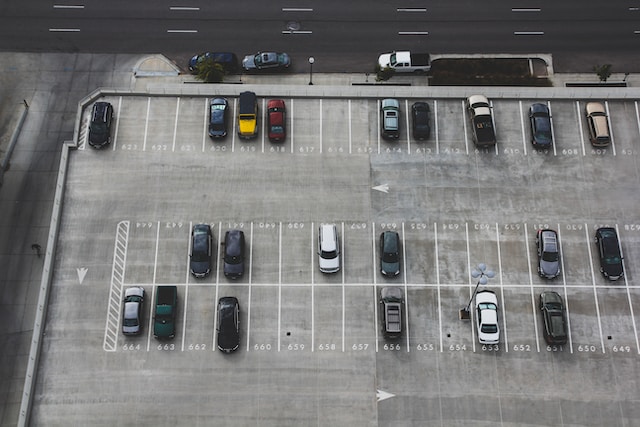A wide range of vehicles uses parking lots and must be designed accordingly. Regular maintenance is essential to prevent small cracks from becoming long, wide, and deep. A well-kept parking lot tells potential customers that a business cares about its appearance and clients. A basic understanding of paving terminology will help you communicate effectively with your contractor.

Permeable Pavers
The paving material you choose for your parking lot is a crucial decision. It must be able to stand up to the loads that vehicles and pedestrians will put on it, provide adequate drainage and be easy to maintain. Permeable pavers are a popular choice for commercial and residential parking lots because they allow stormwater to pass through the pavement without collecting on it or running off into the surrounding soil. It will enable the water to infiltrate the underlying stone reservoir and naturally filter out pollutants before reaching receiving waters or groundwater.
However, it’s important to note that these pavements can clog if the area around them isn’t maintained properly. Ensure no large piles of dirt or mulch and the space between the pavers is clear. You may also need to replace the small stones between them every few years. It will improve infiltration and prevent clogging. Also, regularly sweep and vacuum the surface and keep it clear of oil and grease spills.
Asphalt
Parking lot paving Elkhart IN, frequently uses asphalt because it can be installed fast. It also provides a smooth, even surface for vehicles to drive on, which can help reduce bumps and vibrations. Asphalt is less expensive than concrete, making it a good option for budget-conscious property owners. It is also resilient to cold climates, which can cause other pavement materials to crack or deteriorate over time.
When planning the pavement structure and thickness for your parking lot, it’s necessary to consider the different kinds of cars. Heavier vehicles, like trucks, can damage pavement that is too thin. You should designate specific truck lanes with thicker pavement in your lot to address this. Barriers and gates should be installed in your parking lot to control access and prevent unauthorized vehicles from entering. They should be constructed of material compatible with the type of pavement you select.
Concrete
Concrete is an excellent choice for parking lots due to its strength, durability and energy efficiency. It also provides enhanced curb appeal and superior long-term value compared to asphalt. With its higher load-bearing capacity, concrete is a smart option for parking lots with many large vehicles. Its surface can also be stained, textured and stamped to create a modern look that reflects more light.
Another benefit of concrete is that it is less affected by cold temperatures and salt. It means it will deteriorate slowly and requires less maintenance. To assist in melting snow and ice more quickly than asphalt, it may also absorb more heat from the sun. Lastly, concrete is made from recycled materials like crushed glass, plastic bottles and waste oil, making it eco-friendly. Concrete offers a durable parking lot that is resistant to damage and rutting when combined with proper drainage. It helps reduce the need for expensive repairs.
Landscaping
Whether your business is an office, shopping mall or restaurant, having lined parking spots and a neatly maintained parking lot shows visitors that you care about your appearance. A clean lot also reduces maintenance and repair costs. A basic requirement for any parking lot is drainage, especially in areas with heavy vehicle traffic. Standing water is dangerous to drivers and can damage the pavement over time. A well-designed system of slopes, gutters and inlets can greatly extend the surface’s life. A parking lot’s surrounding landscaping can enhance or lessen the visual impact of the asphalt or concrete surface. Fences, barriers and planting can help control access to the parking lot, protect cars from vandalism, muffle noise and add color and texture. Greenery should be hardy and attractive but not so lush that it requires too much maintenance. It should also survive soot, gas fumes and varying weather conditions.
